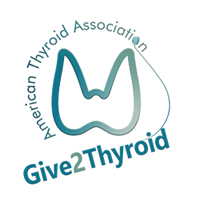The purpose of this study is to determine if the TIRADS ultrasound system can predict the absence of thyroid cancer in previously undetected thyroid nodules identified during PET scanning and, thus, avoid thyroid biopsy.
THE FULL ARTICLE TITLE:
Trimboli P et al 2018 Fine-needle aspiration in all thyroid incidentalomas at 18F-FDG PET/CT: can EU-TIRADS revise the dogma? Clin Endocrinol (Oxf ) 89:642–648. Epub 2018 Aug 6. PMID: 30019402.
SUMMARY OF THE STUDY
The authors looked at every PET scan done at their institution over a four-year period (between 2014 and 2017). They ultimately identified 66 cases for which PET scanning identified an unexpected thyroid nodule and for which thyroid surgery was performed. For this group, 13 thyroid nodules were found to be cancerous, while the remaining 53 nodules were benign. In evaluating the TIRADS category for each of the 13 cancerous nodules, the authors found that none of these cancers were classified in the TIRADS 2 category, while the number of cancers increased with each increase in TIRADS category number (11 of the 13 cancers were classified as TIRADS 5).
WHAT ARE THE IMPLICATIONS OF THIS STUDY?
This study shows that the TIRADS system for estimating thyroid cancer risk among thyroid nodules identified unexpectedly by PET scanning may be useful for further determining the risk of thyroid cancer in these cases. Since no thyroid cancers were present for any TIRADS category <3, this study suggests that biopsy, and potentially surgery, is not be needed for PET-positive nodules classified into these TIRADS categories. It is important to note that this study is quite small, with relatively few patients included for assessment, so the results need to be validated in a larger study. Nonetheless, the results of this study certainly do justify larger studies examining the role of ultrasound in improving diagnosis of thyroid cancer for nodules identified by PET scanning.
— Jason D. Prescott, MD PhD




